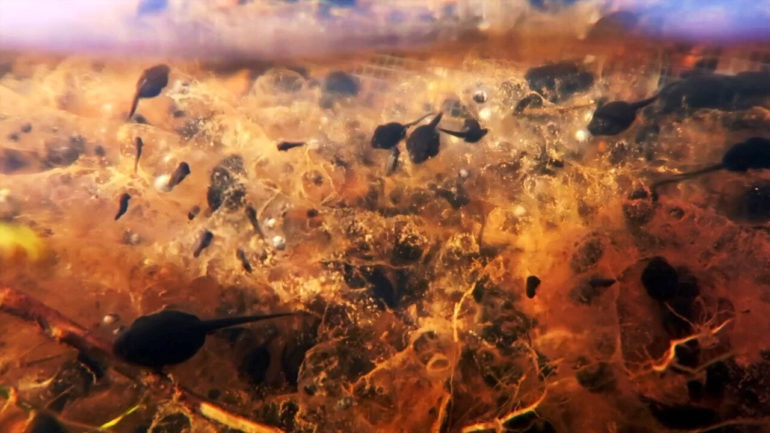A team of researchers at the University of Sydney has found that invasive cane toad tadpoles have given their species an advantage in Australia by eating the hatchlings of native toads. In their paper published in Proceedings of the National Academy of Sciences, the group describes how they tested the willingness of cane toad tadpoles to consume competitors and whether it gave them an advantage.
Researchers have been studying the behavior of invasive species in recent years to learn more about their adaptability and whether it might help some of them survive a warming planet. In this new effort, the researchers have studied the cane toad—a species native to South America that was introduced into Australia in 1935 as a means for pest control. Since that time, the population of cane toads in Australia has skyrocketed. Prior research has shown that native predators of the toads have not been able to overcome the toxins in the invasive species’ skin, leaving them to multiply with abandon. Prior research has also shown that cane toad tadpoles often catch and consume the hatchlings of native toad species, reducing the number of rivals. In this new effort, the researchers wondered if the cane toads had developed this form of cannibalism as a tactic to help them survive in their new environment, or if it was something they had done in their native land. To find out, they carried out a series of tests.
The first test involved capturing hundreds of cane toads in both Australia and their native South America—the team exposed both to hatchlings native to Australia and found that the hatchlings were more likely to be eaten by cane toads living in Australia. The researchers also tested them another way: they set up traps containing native Australian hatchlings and then counted how many of the cane toad tadpoles from Australia were willing to enter the traps compared to those from South America. The data showed the cane toad tadpoles from Australia were 29.5 times as likely to enter the traps as those living in South America. The researchers suggest this shows that the invasive tadpoles have developed an aggressive tendency to kill and eat a native rival species. A third test showed that the invasive tadpoles developed more rapidly than native tadpoles, giving them the ability to easily overcome native hatchlings.
The researchers suggest their findings indicate that cane toads have developed cannibalism as a means of improving their chances of survival in a new environment—and that it has worked very well for them.
Cane toad testes smaller at the invasion front
More information:
Jayna L. DeVore et al, The evolution of targeted cannibalism and cannibal-induced defenses in invasive populations of cane toads, Proceedings of the National Academy of Sciences (2021). DOI: 10.1073/pnas.2100765118
2021 Science X Network
Citation:
Invasive cane toads found to use cannibalism to improve their chances of survival in new areas (2021, August 24)
retrieved 24 August 2021
from https://phys.org/news/2021-08-invasive-cane-toads-cannibalism-chances.html
This document is subject to copyright. Apart from any fair dealing for the purpose of private study or research, no
part may be reproduced without the written permission. The content is provided for information purposes only.
